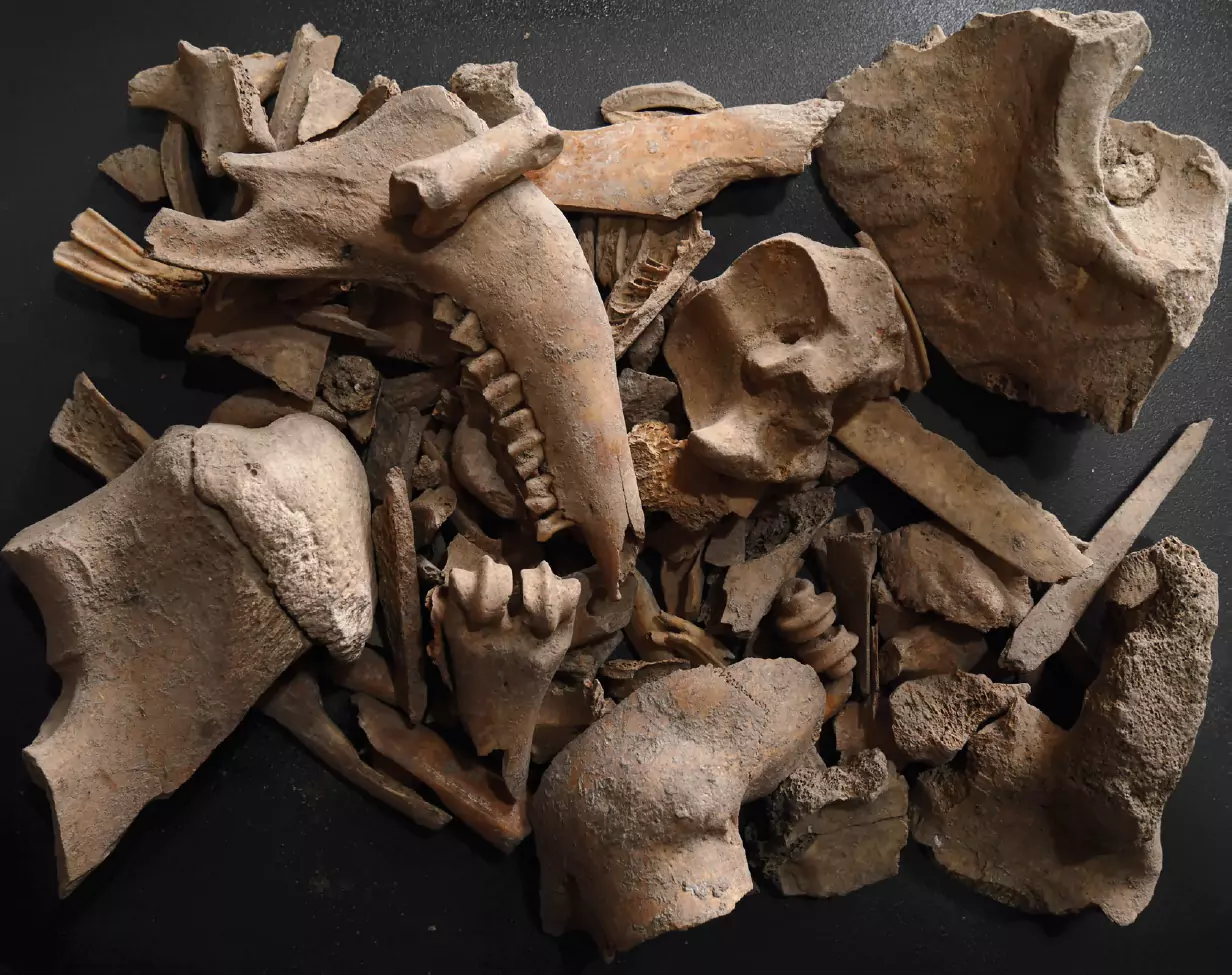
20 Wild and domesticated animals in the urban and rural tissue
Animal remains are a great source of knowledge about the diet of past inhabitants of archaeological sites such as Musti. They can also help to reconstruct the environment around the site. Animal bones excavated from several trenches at Musti allowed us to discuss husbandry, the meat preferences and butchering practices among the people inhabiting this ancient city in five chronological periods, including Numidian Period, Intermediate Period, Roman Period, Late Antique and Islamic Period.
The most interesting thing was the sudden increase of the pig's role in the pre-Roman and Roman times (Intermediate and Roman Periods) and its slow diminishing in the later times (Late Antique and Islamic Periods). Pork was the primary meat consumed by the Roman legions in Roman colonies and Rome itself. Therefore, the more significant role of this meat must be associated with the growing influence of the Roman Empire in this area. On the other hand, its decrease in the later periods should be related to the infiltration of Arab people and the growing importance of the Muslim religion, which considers the pigs to be impure creatures. With this other event, we should also connect the increasing role of sheep and goats, the animals kept in great numbers even today in the North African and Arabian Peninsula countries.
Another curiosity is the use of transport animals. In earlier periods, horses were mainly in use, and donkeys were also used from the Intermediate Period till Late Antique, as attested by the presence of their remains in the contexts from these periods. In the Islamic Period, the camels began to play the role of transport animal instead of donkeys.




